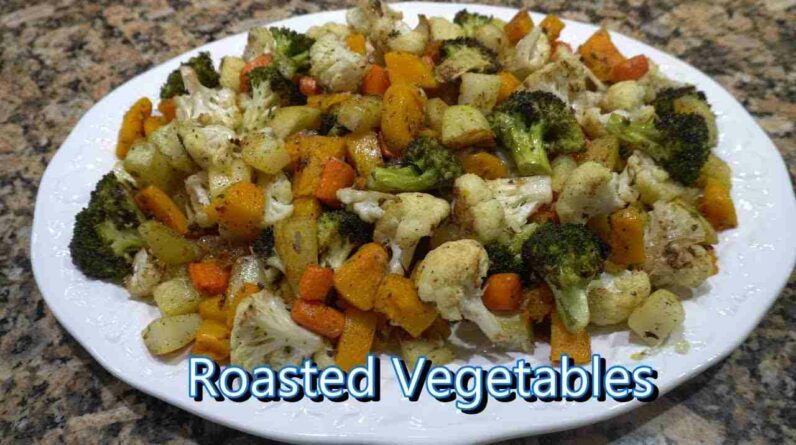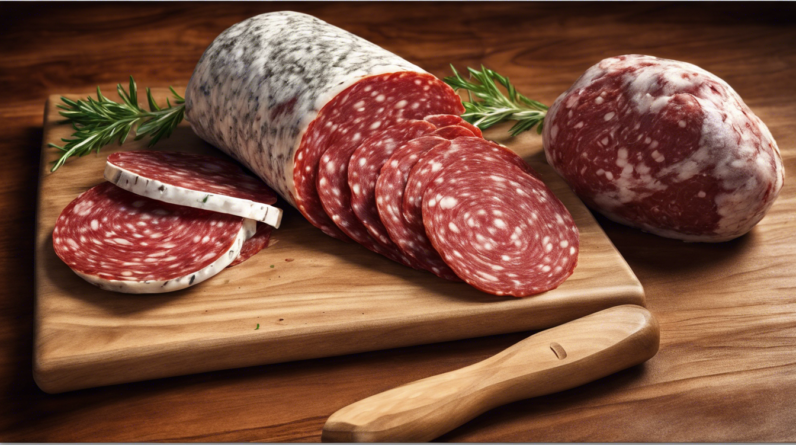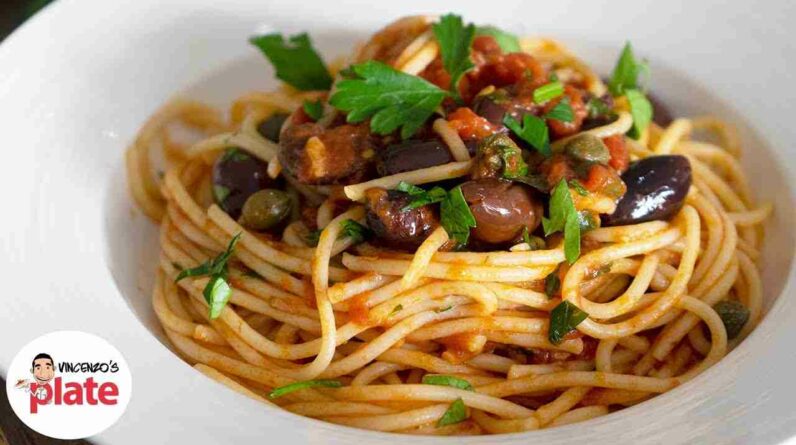Italy is renowned for its delicious and diverse cuisine, but have you ever wondered why the food varies so greatly from region to region? From the pasta-loving North to the pizza-dominated South, Italian cuisine encompasses a multitude of unique flavors, ingredients, and cooking techniques. This article will explore the fascinating regional diversity within Italian cuisine, shedding light on the rich culinary heritage and traditions that make it one of the most beloved and celebrated cuisines in the world. Prepare to tantalize your taste buds and unravel the secrets behind Italy’s gastronomic mosaic.

Origins of Italian Cuisine
Italian cuisine is not just a single monolithic entity, but rather a tapestry woven from various cultural influences that have shaped it over centuries. The roots of Italian cuisine can be traced back to the ancient Romans, who laid the foundations of what we now recognize as Italian cooking. However, it was not until later historical periods that the cuisine really began to take shape.
Ancient Roman Influence
The ancient Romans played a significant role in forming the basis of Italian cuisine. Their culinary practices heavily emphasized the use of simple, fresh ingredients such as grains, vegetables, fruits, and meats. Pasta, in particular, was a staple in their diet and continues to be a fundamental component of Italian cuisine today. The Romans also introduced the concept of culinary extravagance, with elaborate banquets featuring a wide range of dishes.
Arab and Byzantine Influences
During the Middle Ages, Italian cuisine experienced a profound transformation due to the Arab and Byzantine influences in the region. Arab traders brought with them a variety of spices, such as saffron, cinnamon, and nutmeg, which added depth and complexity to Italian dishes. In addition, the Arabs introduced new cooking techniques, such as frying, that are still widely used in Italian cuisine today. Byzantine influence, on the other hand, brought about a culture of preservation through techniques such as pickling and drying foods, leading to the creation of iconic Italian ingredients like cured meats and cheeses.
Medieval Influences
The Middle Ages marked a crucial period in the evolution of Italian cuisine. During this time, trade and exploration led to the discovery of new ingredients, including exotic spices from the Far East and the New World. These ingredients brought vibrant flavors and expanded the culinary horizons of Italian cooks. Moreover, the rise of powerful city-states, such as Venice and Florence, fostered a competitive culinary culture, with each city striving to showcase its unique dishes and specialties.
Renaissance Influences
The Renaissance era in Italy ushered in a renewed emphasis on aesthetics and the arts, and this had a profound impact on the cuisine. The refinement of Italian cooking reached new heights, with attention given not only to taste but also to the presentation of dishes. The period saw the birth of numerous iconic Italian recipes, such as pasta alla carbonara and tiramisu.
North Region Cuisine
Italy’s regional diversity is epitomized by the distinct cuisines that each region offers. Let’s embark on a gastronomic journey through the different regions of Italy, starting with the North.
Lombardy Cuisine
Lombardy, located in the north-central part of Italy, is renowned for its rich and hearty dishes. Creamy risottos, such as the famous risotto alla Milanese flavored with saffron, are staples in Lombard cuisine. Another iconic dish from this region is ossobuco, a succulent braised veal shank served with gremolata. Lombardy is also home to the world-famous Parmesan cheese, which adds its distinctive nutty flavor to numerous dishes.
Piedmont Cuisine
Piedmont, nestled in the northwest corner of Italy, boasts a cuisine heavily influenced by its proximity to France and Switzerland. This region is famous for its truffles, particularly the prized white truffles of Alba, which are used in various dishes to impart their unique earthy flavor. Piedmont is also renowned for its rich and savory agnolotti pasta, as well as for the indulgent dessert known as gianduja, a heavenly combination of chocolate and hazelnuts.
Veneto Cuisine
Veneto, situated in northeastern Italy, is home to one of the most iconic Italian dishes – risi e bisi. This flavorful risotto incorporates fresh peas and pancetta, reflecting the region’s agricultural abundance. Veneto is also the birthplace of tiramisu, the luscious layered dessert made with coffee-soaked ladyfingers and mascarpone cheese. Additionally, the region is renowned for its seafood dishes, thanks to its location along the Adriatic Sea.

Central Region Cuisine
The central region of Italy offers a diverse range of flavors, with each subregion showcasing its unique culinary heritage.
Tuscany Cuisine
Tuscany, often considered the heart of Italian cuisine, prides itself on its rustic simplicity and use of high-quality ingredients. Florentine steak, a thick-cut, juicy beef steak seasoned with salt and pepper, is a signature dish of Tuscany. Another classic Tuscan delight is ribollita, a hearty vegetable and bread soup that is perfect for cold winter days. Tuscany is also famous for its wine production, particularly Chianti and Brunello di Montalcino.
Lazio Cuisine
Lazio, the region encompassing Rome, is known for its bold and flavorful cuisine. Carbonara, a creamy pasta dish featuring eggs, guanciale (cured pork cheek), and pecorino cheese, originated in this region and has become a favorite worldwide. Another Roman specialty is saltimbocca alla romana, veal cutlets wrapped in prosciutto and sage, and pan-fried to perfection. Lazio is also celebrated for its artichokes, which are prepared in a multitude of delightful ways.
Umbria Cuisine
Umbria, the green heart of Italy, offers a cuisine deeply rooted in tradition and local produce. The region’s rolling hills provide ample grazing land for sheep, resulting in the production of outstanding pecorino cheese. Umbria is also known for its hearty dishes, such as porchetta, a succulent roast pork flavored with garlic, rosemary, and fennel. Truffles are another prized ingredient in Umbrian cuisine, with the black truffles of Norcia lending their earthy aroma and flavor to various dishes.
South Region Cuisine
Heading south, we encounter a vibrant and diverse culinary landscape that reflects the region’s rich history and strong cultural influences.
Campania Cuisine
Campania, home to Naples and the iconic pizza, boasts a cuisine that is bold and full of flavor. Neapolitan pizza, with its thin, soft crust and simple yet authentic toppings, is widely regarded as one of the world’s best. Another hallmark of Campania cuisine is “mozzarella di bufala,” a soft and creamy cheese made from the milk of water buffaloes. The region is also famous for its spaghetti alle vongole, a tasty pasta dish featuring fresh clams cooked in garlic, white wine, and olive oil.
Sicilian Cuisine
Sicilian cuisine reflects the island’s diverse cultural heritage, blending influences from the Greeks, Arabs, Normans, and Spanish. Arancini, delicious deep-fried rice balls filled with meat or cheese, are a Sicilian specialty enjoyed by locals and visitors alike. The famous caponata, a sweet and sour eggplant dish, and the refreshing dessert granita, made with shaved ice and fruit flavors, are also staples of Sicilian cuisine.
Calabrian Cuisine
Calabria, located on the southern tip of Italy’s mainland, is known for its bold and spicy flavors. The region is renowned for its fiery ‘nduja, a spreadable pork salumi made with Calabrian chili peppers. Calabrian cuisine also celebrates simplicity and the use of fresh ingredients. One of its most beloved dishes is “pasta con le sarde,” a pasta dish that combines the flavors of sardines, wild fennel, raisins, and pine nuts, resulting in a harmonious balance of sweet and savory.

Island Cuisine
Sardinia, the second-largest island in the Mediterranean Sea, boasts a distinctive cuisine that reflects its isolation and unique cultural heritage.
Sardinian Cuisine
Sardinian cuisine is characterized by its rustic simplicity and the use of locally sourced ingredients. The island is renowned for its pecorino cheese, particularly the aged variety known as “pecorino sardo.” Another iconic Sardinian dish is “porceddu,” a suckling pig roasted to perfection, which showcases the island’s strong pastoral traditions. Sardinia’s coastal location also means that seafood plays a prominent role in its cuisine, with dishes like “fregola con arselle,” a delicious pasta with clams, being particularly popular.
Sea and Coastline Influence
The Italian coastline and its proximity to the Mediterranean Sea have significantly impacted the country’s culinary traditions.
Seafood
Italy’s extensive coastline ensures a bountiful supply of fresh seafood that finds its way onto the plates of both coastal residents and inland dwellers. From succulent grilled fish to decadent seafood pasta dishes, like spaghetti alle vongole or linguine ai frutti di mare, Italian cuisine showcases the bounty of the Mediterranean Sea.
Mediterranean Flavors
The use of Mediterranean ingredients and flavors pervades Italian cuisine. Olive oil, garlic, tomatoes, and fresh herbs are ubiquitous in Italian dishes and contribute to the vibrant and healthy nature of the cuisine. The combination of these ingredients results in a harmonious medley of flavors that are the hallmark of Italian cooking.

Mountain Cuisine
Italy’s extensive mountain ranges have also influenced the country’s culinary landscape, with alpine regions contributing unique and distinct flavors.
Alpine Influences
The alpine regions of Italy, such as the Dolomites and the Italian Alps, have a cuisine characterized by hearty and comforting dishes. Polenta, a versatile cornmeal dish, is a staple in these regions and is often served alongside hearty stews or cheeses. Game meats, such as venison and wild boar, are popular ingredients, reflecting the abundance of wildlife in the mountains. Alpine regions also produce a variety of exquisite cheeses, including fontina and bitto, which are enjoyed both locally and internationally.
Italian Pasta Varieties
Pasta is a quintessential component of Italian cuisine, and each region has its unique pasta specialties.
Northern Pasta
In the northern regions of Italy, pasta often takes the form of stuffed varieties, such as tortellini and ravioli. These pasta shapes are often filled with rich and flavorful ingredients like cheese, meat, and vegetables. The delicate and intricate process of making these pasta parcels is a testament to the craftsmanship and care that goes into Italian cooking.
Central Pasta
Central Italy is home to iconic pasta shapes such as penne, spaghetti, and fettuccine. These pasta varieties pair perfectly with various sauces, whether it be a simple tomato and basil sauce or a more elaborate ragù. Central Italy’s pasta is known for its ability to capture and enhance the flavors of the accompanying ingredients.
Southern Pasta
In the southern regions of Italy, pasta tends to be shorter in shape, making it ideal for capturing and holding onto robust sauces. Pasta shapes like orecchiette and fusilli are commonly found in southern dishes, particularly in traditional recipes featuring seafood or vegetables. The versatility and adaptability of southern pasta make it a beloved choice for countless regional dishes.

Dishes and Specialties
Italian cuisine is renowned for its regional dishes and specialties that highlight the unique flavors and ingredients of each area.
Popular Regional Dishes
Throughout Italy, there are numerous popular regional dishes that have gained international recognition. These include classics such as spaghetti carbonara from Lazio, lasagna from Emilia-Romagna, and pizza margherita from Campania. Each dish is a testament to its region’s culinary heritage and the artistry of Italian cooking.
Regional Specialties
Alongside their popular dishes, each region of Italy has its own array of unique specialties. From Liguria’s fragrant pesto sauce to Puglia’s savory orecchiette with broccoli rabe, these regional specialties celebrate the distinct local flavors and culinary traditions.
Wine and Cheese Varieties
Italy’s wine and cheese production is as diverse as its regional cuisine, with every region offering its own distinct varieties.
Northern Wine and Cheese
The northern regions of Italy, with their cool climates and fertile soils, are known for producing some of the country’s finest wines. From Piedmont’s robust Barolo to Veneto’s elegant Amarone, the north boasts a wide range of exceptional wines. Likewise, the region is celebrated for its creamy and flavorful cheeses, including gorgonzola and taleggio.
Central Wine and Cheese
Central Italy is renowned for its aromatic and fruit-driven wines. Tuscany’s Chianti, Umbria’s Sagrantino, and Marche’s Verdicchio are just a few examples of the diverse offerings from this region. When it comes to cheese, central Italy shines with its world-famous pecorino romano, a tangy and salty sheep’s milk cheese that adds depth to countless dishes.
Southern Wine and Cheese
The warm climate and fertile volcanic soils of southern Italy contribute to the production of robust and full-bodied wines. Sicily’s Nero d’Avola, Campania’s Aglianico, and Puglia’s Primitivo are among the outstanding red wines of the south. Southern Italy is also home to a wide array of cheeses, including the spicy and aged pecorino di Filiano from Basilicata and the smooth and mild caciocavallo from Calabria.
Italian cuisine is a journey through time and territory, where each region tells its own story through food. From the ancient Roman influence to the vibrant coastal flavors and mountainous delights, Italian cuisine is an embodiment of diversity and rich culinary heritage. So, next time you savor a plate of pasta or raise a glass of Italian wine, remember that beyond the delicious flavors lies a tapestry of history, tradition, and regional pride.









